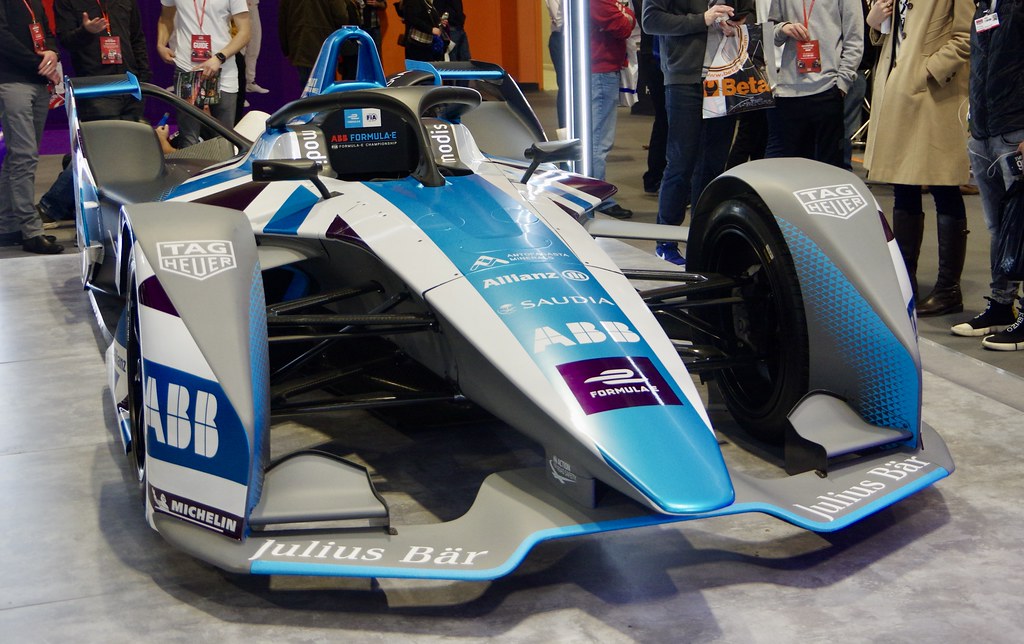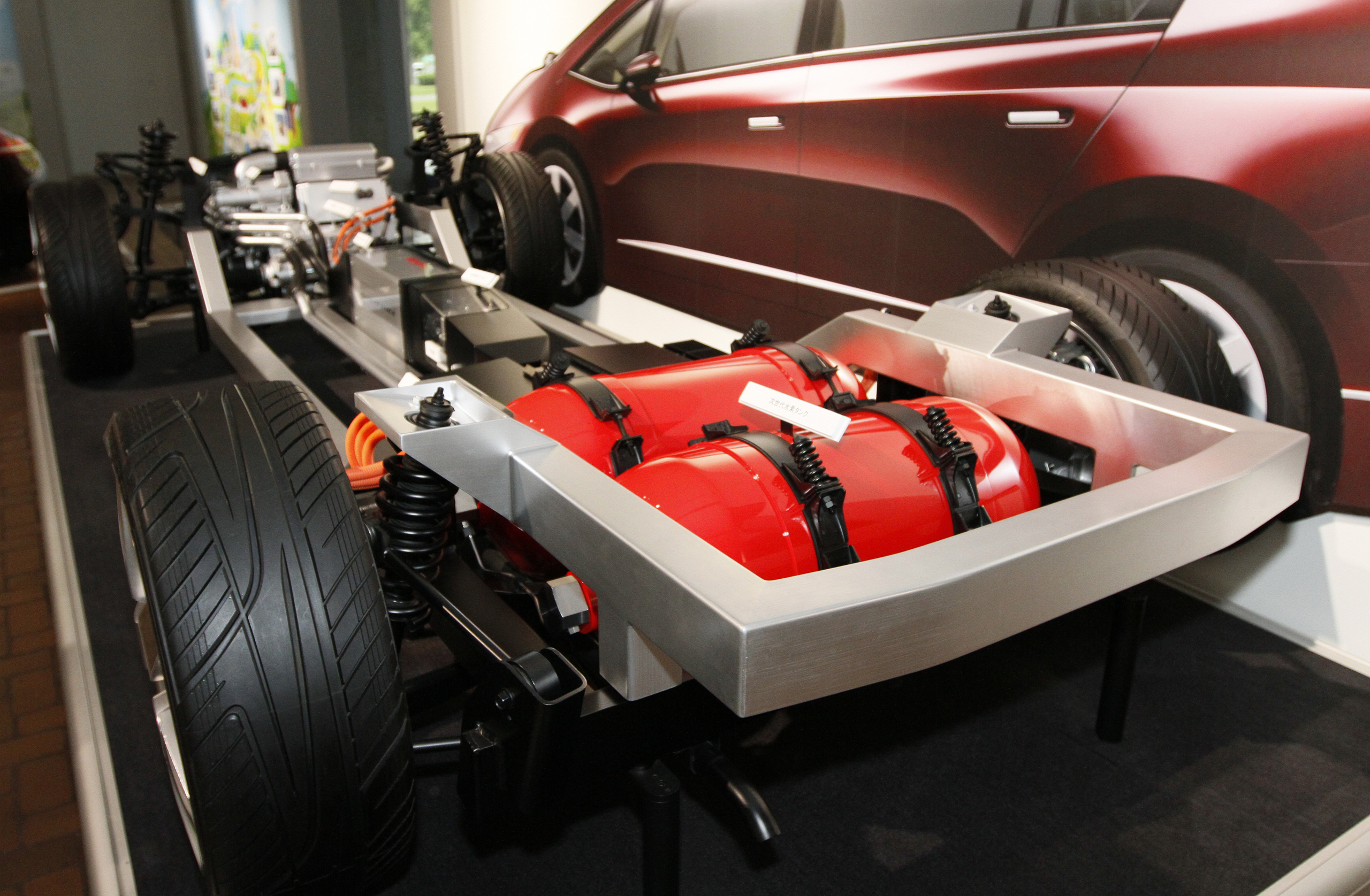Could Formula E cars run on hydrogen?
Note: I did not research hydrogen-powered racing before writing this article; I wanted to use deductive reasoning and napkin math to satisfy my curiosity
I was curious what Formula E would be like with a fuel cell instead of batteries, so I calculated the energy storage of various cars using different fuels just for giggles.
Energy storage of various vehicles
A 2nd generation Formula E car has a 54 kW h battery. (I prefer kW h over MJ #sorrynotsorry)
A street-legal Honda Clarity FCEV holds 5.46 kg of compressed hydrogen gas, or 214 kW h:
$$5.46~\text{kg}\text{H}_2\cdot\frac{1000\text{g}}{1~\text{kg}}\cdot\frac{1~\text{mol}\text{H}_2}{2.016\text{g}}\cdot\frac{285~\text{kJ}}{1~\text{mol}\text{H}_2}\cdot\frac{1\text{kW h}}{3600~\text{kJ}}\approx214~\text{kW h}$$
A 2020 F1 car holds 105 kg of premium gasoline, or 1 321 kW h:
$$105~\text{kg}\text{gasoline}\cdot\frac{1\text{L}}{0.75~\text{kg}}\cdot\frac{9.5~\text{kW h}}{1~\text{L}}\approx1321\text{kW h}$$

2nd generation Formula E car [5]
Efficiency and power output
Fuel cells are only 60% efficient according to the US Dept. of Energy [1], but that’s still ~2.5x the usable amount of energy as a current Formula E car (ignoring the real battery’s internal resistance, so the actual number is even better than 2.5x).
The Clarity’s fuel cell outputs 100 kW continuous, and only weighs 52 kg. [2] It uses a 1.7 kW h buffer battery to feed the motor, which is similar to the 1 kW h accumulator F1 cars use for their MGU-K boost motor. Formula E cars use their 54 kW h battery for a 45 minute race, so the average power is 72 kW:
$$\bar{P}=\frac{54~\text{kW h}}{0.75~\text{h}}=72~\text{kW}$$
The Clarity fuel cell’s average power output should be sufficient for a race, but the Formula E car would probably need a larger supercapacitor to handle the 250 kW bursts. Luckily, the 52 kg fuel cell would be replacing a 250 kg battery, so there should be plenty of room for a capacitor energy store.
Safety

Honda Clarity hydrogen tanks inside ladder frame [5]. Not much protection compared to a racecar!
Safety is a huge consideration with hydrogen fuel. F1 cars put their fuel tanks inside the monocoque (“safety cell”), behind the driver’s seat. The system isn’t foolproof; when Romain Grosjean crashed in 2020, his fuel system burst and there was a huge fire. Hydrogen could be a potential safety upgrade: Toyota shot their hydrogen tank with a .50 caliber round and it didn’t explode. [4] A fuel cell electric vehicle doesn’t have a hot exhaust to serve as an ignition source, and there isn’t 105kg of gasoline ready to coat the driver in case of a tank failure; hydrogen is the lightest gas/element in the universe. One safety hazard is water production: a Honda Clarity outputs roughly 50L of water per tank of hydrogen, which would need to be dumped somewhere other than the racetrack.
Conclusion
With some modification, the hydrogen power source from a normal Honda Clarity should be sufficient to power a Formula E car. The higher available energy could lead to faster, longer, and more exciting races, and street-legal spec powertrains would further the FIA’s goal of using Formula E as a laboratory to develop more environmentally-friendly street cars. To be clear, I’m not advocating for hydrogen as a replacement for battery electric vehicles or hybrids; this is just a thought experiment about electric racing.
[1] https://www.energy.gov/sites/prod/files/2015/11/f27/fcto_fuel_cells_fact_sheet.pdf
[2] https://owners.honda.com/vehicles/information/2019/Clarity%20Fuel%20Cell/specs#mid^ZC4F8KGNW
[3] “Honda FCX platform rear Honda Collection Hall” by Morio is licensed under CC BY-SA 3.0.
[4] https://www.youtube.com/watch?v=jVeagFmmwA0
[5] “Formula E Car” by Dave Hamster is licensed with CC BY 2.0. To view a copy of this license, visit https://creativecommons.org/licenses/by/2.0/
Last modified: 2021-03-01